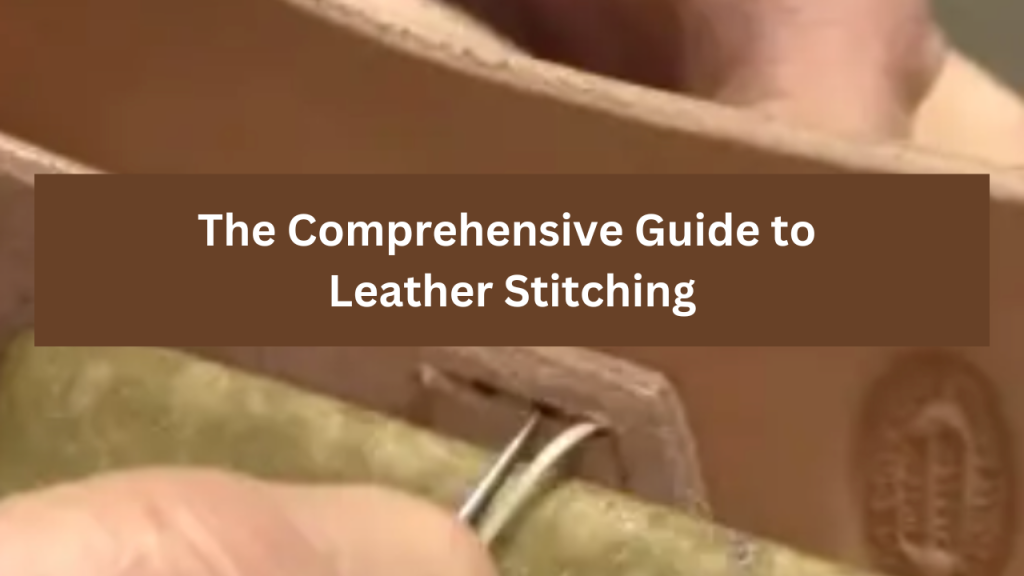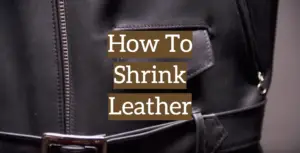
Leather stitching is not merely a craft but an ancient art that’s been passed down through generations. In a world dominated by machine-made products, hand-stitched leather items stand out, echoing tales of craftsmanship, dedication, and passion. This article delves deep into the intricate world of leather stitching, providing you with a thorough understanding of its techniques, tools, and much more.
The Historical Significance of Leather Stitching
Long before the advent of modern machinery, leather goods were entirely hand-stitched. From the sandals of Egyptian pharaohs to the rugged boots of Roman soldiers, stitching held leather pieces together, providing durability and strength. These items, exposed to the test of time, are often found in remarkable condition today, speaking volumes about the craftsmanship of yesteryears.
Hand Stitching vs. Machine Stitching: A Comparative Look
-
Hand Stitching:
Hand stitching is synonymous with precision, durability, and artistry. Each stitch, when done with care, ensures the product’s longevity. The saddle stitch, a popular hand-stitching method, uses two needles and ensures that even if one stitch comes loose, the rest remain intact. It’s labor-intensive but provides a finish that machines can’t replicate.
-
Machine Stitching:
Machines offer speed and uniformity. The lock stitch method, commonly used by machines, offers strength, but it’s not as durable as the saddle stitch. If one stitch unravels, it often leads to a domino effect, compromising the product’s structure.
Essential Tools for Leather Stitching
- Needles: The unsung heroes of leathercraft. While it might seem trivial, selecting the right needle can drastically alter your stitching experience. Blunt-end needles are preferable as they navigate through pre-made holes without splitting leather fibers.
- Thread: Threads can make or break your leathercraft. Waxed threads, given their resistance to water and enhanced durability, are ideal for leather stitching. They also glide through leather smoothly, minimizing friction.
- Awl: An awl aids in making consistent holes, ensuring that the stitching remains even. Different awls cater to varying thicknesses and types of leather.
- Stitching Pony: Imagine trying to stitch while holding the leather with your knees or placing it on a table. The stitching pony, a clamp-like tool, securely holds the leather, allowing for precise stitching.
Techniques That Define Leather Stitching
- Saddle Stitch: The crown jewel of hand-stitching. It uses two needles, doubling the stitch’s strength. Even if one side of the stitch breaks, the other remains intact, ensuring the product’s longevity.
- Cross Stitch: Beyond its functional use, stitching can be decorative. The cross stitch creates an ‘X’ pattern, adding a unique aesthetic touch to the leather product.
- Running Stitch: Simplicity at its best. It’s faster than the saddle stitch but is not as durable. Ideal for items that don’t endure much wear and tear.
- Whip Stitch: Perfect for edges, it creates a beautiful looped pattern, adding a rustic charm to leather goods.
The Art of Perfect Stitching: Tips & Tricks
- Consistent Spacing: Tools like pricking irons or stitching wheels ensure even spacing, making the stitch appear neat and uniform.
- Maintaining Tension: Consistency is vital. Maintaining the same tension throughout prevents loose or overly tight stitches, ensuring a professional look.
- Waxing the Thread: This not only prevents tangling but also ensures smooth movement through the leather, reducing wear and tear on the thread.
- Double Back: When starting or finishing, go back a few stitches. This strengthens the stitch, ensuring it doesn’t come undone.
Troubleshooting Stitching Challenges
Leathercraft, like any other skill, comes with its set of challenges. Uneven stitches, tangled thread, or stitching that’s too tight or loose can deter craftsmen. However, with practice, patience, and the right tools, these challenges can be overcome, paving the way for impeccable leather goods.
Conclusion
Leather stitching, an amalgamation of art and technique, stands as a testament to a craftsman’s skill and dedication. In a world increasingly veering towards fast fashion and mass production, hand-stitched leather goods exude a timeless charm, telling tales of craftsmanship and passion. Mastering the art of leather stitching is not just about creating a product; it’s about crafting a legacy.









